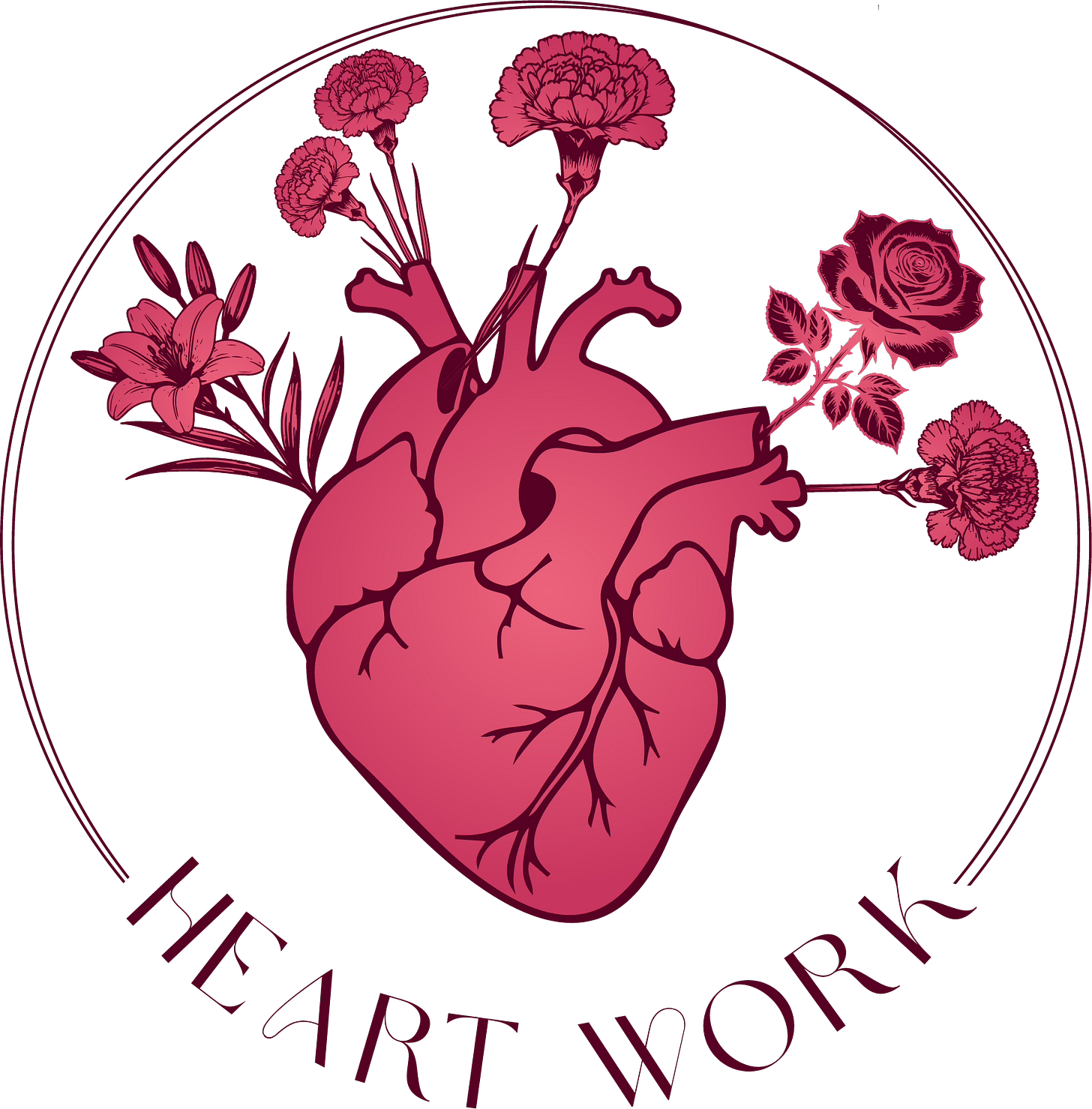Wild heart on Chesterman Beach. “Mom, watch your feet, the ocean is coming in. It’s going to erase that heart. Which I guess is a reminder of the impermanence of all things.” You make your kid listen to weird yoga podcasts during a long drive and suddenly they’re a casual Buddhist philosopher.
The impulse to shape-shift is part of the human experience. We need a sense of belonging to experience equilibrium in the system, so from the time we are tiny babies, we become adept at reading other people and accommodating our energy to them.
Babies cry differently depending on their caregiver’s mood.
Toddlers are better at reading eye contact than any of us.
Adults reach for a life that feels authentic, not based on anyone else’s interests or beliefs, but even that is a sign of the times. We weren’t talking about authenticity a few years ago. This coincides with a larger cultural shift away from celebrities and toward DIY media like podcasts and TikTok. In the background of this change, AI mimics human creations like essays and dating app profiles until something too good feels uncanny and creepy. The authentic self emerged as a character in that landscape, looking pretty ideal. Many of us confuse the authentic self part with actual Self energy.
When we shape-shift, we are taken over by a part that thinks it understands the situation and prompts us to behave according to whatever made up rules it imagines exist there. This doesn’t have to mean self-betrayal. Some of our shape-shifter parts are who we should really be dedicating the acceptance speeches of our life to, they stretch us out if comfort zones and in to master’s degrees, new business ventures, first dates.
We shape-shift out of a desire to connect and belong, so it’s worthwhile to understand this process through the lens of relationality.
The False Self in Relationship
The way that others encounter us is always with a curated image. You might be in your authentic vibe, whatever that means, but you’re still making subtle shifts according to context and relationship.
We idealize romantic love because we imagine it as the site where we can finally be whole. Notions of unconditional love became popular in recent years and we imported all of that into intimate relationships, plunking it onto the shoulders of our partners with a sassy if you can’t handle me at my worst, you don’t deserve me at my best.
When relationships end, it takes a minute or two to connect back to the Self. After some time, we usually get to a point where we look back and feel a little bit of self-betrayal. Why did I pretend I like action movies? Or why didn’t I tell them I really do want to have kids? Or why did I agree to go along with opening the relationship?
In those moments, we weren’t self-betraying, we were calling forth energy to help with connection. We learn to be palatable. We soften our edges, smile on cue, reach for them instead of turning away because all the love advice says we have to be open and we are still so hopeful.
When the rupture occurs and a goodbye is shared, the silence that follows echoes through the scaffolding of that temporary home you created for them in your heart. The familiar becomes strange and you adapt to the vibe, following a break up with a new haircut or exercise routine. You may not understand the parts of you still aligned with that other person, giving yourself an internal ick. This ignites the urge to connect with Self so you go buy an authenticity journal, listening to Alanis Morissette on the way to the store while the algorithm quietly prepares several weeks of content from persuasive people with no credentials.
Hey, do you want to hear an absolutely disgusting secret about men that they definitely don’t want me to tell you?
You didn’t do all that because there’s something wrong with you. It’s just the human experience. Notice the false selves you construct and then we’ll work on that.
🧠 Time for school: Foucault and the Constructed Self
Michael Foucault teaches us that the self is not a fixed entity, it’s a construct. I don’t think he’d agree with the idea of a divine Self, he’d say it’s an identity constructed with spiritual and other (IFS) discourses. I mean. Accurate, at least in part.
We craft our identities from an accumulation of life clutter based on culture, gender, location, etc, and it’s all influenced by power structures that shape how we take up ideal identities and how that makes us behave.
We don’t discover who we are; we produce ourselves through language, relationship, gaze, passion, devotion. We speak ourselves into existence, sometimes in alignment with historical patterns and interests, sometimes not.
Oh, I love action movies.
We internalize a thousand subtle messages about what it means to be lovable, desirable, good. I grew up in the era where heroin chic was the pinnacle of sexiness. Womanhood was locked somewhere between sharp hipbones and smudged eyeliner, the right way to see the world was with a perfect, tragically bored gaze. The Smashing Pumpkins told us cool kids never have the time so we left our plaid shirts unbuttoned, our Doc Martens unlaced, our biology homework undone.
Even in my middle aged years, I still hear I knew you were here because I heard you giggling, so coming of age in 1990s grunge was awkward. I stumbled through my youth in combat boots and baby doll dresses, science fiction library books and fierce, confusing girl crushes. At the helm of my becoming stood 1990s Drew Barrymore.
We identify with what is idealized in the time/space we live in, and get ourselves as close as possible to it. The ideal self acts like the North Star and we’re in a constant act of alignment.
Think of your ideal self - not just the you who reached all their goals, but the cool kid version.
Whose narrative is that ideal self constructed on? Culprits include nefarious sources like “the media” and “society,” but also self-help books, yoga teachers, your most enviable friend, Drew Barrymore.
What societal systems taught you that you had to be that version of you in order to be accepted? What do you risk by letting go?
🧠 IFS: Protectors, Exiles, and the Return to Self
Parts form when we experience something super hard while too young to understand how to navigate it. A very difficult feeling emerges, something too hard for the system to constantly bear and so it is exiled to the far corners of our minds, guarded by protectors who step forward to put on a whole horse and pony show of distractions.
When we meet anyone, we meet their protectors first. I know that is as true when I’m sitting with a therapy client as much as when I’m on a date or making a new friend or making small talk with a stranger at a coffee shop. If we’ve ever been really, really hurt in love (and all of us have), it can be hard to shift out of the protector energy and in to something less guarded.
A shared, universal experience of being human is the ache behind the question: if you see who I really am, will you still love me?
For some, that question has been asked and answered in harsh, traumatic ways. Often by parents or caregivers. The protective response makes so much sense. And yet.
After a break-up, after the self-betrayal energy of did they even know me? consider looking at the protector squad. Did they let that person in? Did they allow you to be seen, even a little bit, even once or twice? If not, can you try to get there next time you’re in relationship with someone? I don’t just mean intimate partners. Acknowledging the exiled and just rough around the edges parts of ourselves while also trying to connect is the self-healing work we need to be doing.
If they did see what’s behind the protector squad, if you asked those parts to step back and then spoke your needs from the truth of your heart, I want you to know you’re incredible and brave and amazing. It doesn’t matter if they still left. Thank them for the role they played in allowing you to honour your own heart, and release their energy. Our life’s work is to generate peace and love inside chaotic systems and your vulnerability is your superpower.
🧘♀️ Yoga Sutra 1.3: The Seer Rests in Their True Nature
In the Yoga Sutras, this line speaks of the moment when the fluctuations of the mind (stories, identities, parts) quiet, and we return to the still, eternal presence within. The Self, unburdened. No longer distorted by the need to be chosen or understood or desired. No longer crafted, just existing.
In the temporary beauty of the present moment, there is nothing to do, no one to call or convince or coerce, no parts holding any clipboards full of self-improvement guidelines. Tracy Chapman reminds us all that you have is your soul. Coming home to the self with a sense of full presence starts with a deep breath, all the way down to the belly.
Try it.
Do a few cycles. You don’t have to go yet. We’re almost done. You have time. Notice how your energy shifts after you spend time resting in the present moment. Come back when you’re ready.
This is enough work for a lifetime. Start the process by just noticing.
What influences are you responding to? How do they align with so-called ideal versions of you?
What parts can you identify in yourself? What are those false selves made out of? How are they trying to protect you?
Your thoughts, impulses, false selves and parts are separate from the beautiful, divine, juicy little creature that you are. Can you see it?
xo
Leanne





